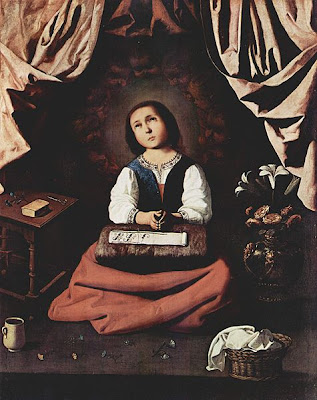
The Nun’s Story, starring Audrey Hepburn and Peter Finch, is a film based on a novel. The novel, in turn, is a fictionalized account of the life of a Belgian nursing sister who left her religious community after taking vows. Since only God knows the soul of the woman whose life underlies the film or the true facts about her life, the comments here are intended only to refer to the story as it is depicted in the screenplay written by Robert Anderson and directed by Fred Zinneman (who also directed High Noon).
As the film begins, Gabrielle van der Mal (Hepburn) is preparing to leave the family home in the company of her father to enter the religious order. As she does, she leaves the artifacts of her relationship with a young man on a table in her bedroom, along with a note asking her father to return them. Before leaving, however, she suddenly turns back and retrieves the golden pen with which she has just written the note, putting it in the pocket of her dress. Although she later relinquishes this symbol of her self-will, her struggle with what it symbolizes is the central conflict of the film.
Gabrielle’s father, a renowned surgeon, is doubtful that she has a religious vocation. On their way to the convent, they hear the convent bells and he says, “I can see you poor, I can see you chaste, but I cannot see a strong-willed girl like you obedient to those bells.”
Inside the convent, as they await Gabrielle’s admission, her father says of the Mistress of Postulants, "I suppose Sr. Margarita is what they call a living rule.” That is, if the constitution of her religious order were lost, it could be reconstructed from observing her behavior because she had been perfectly formed in accordance with the order’s rule. Gabrielle’s father admires the “living rule” but seems to doubt that his daughter can ever be a Sr. Margarita.
The demands of formation are formidable and focused on the elimination of pride and self-will. By what appears to be sheer force of the very will she is being asked to relinquish, Gabrielle completes her postulancy, is accepted as a novice, and is assigned the name, “Sister Luke”. Since St. Luke was a medical doctor, the name seems a special blessing.
Having grown up in her father's laboratory, Sr. Luke excels in her nursing studies and seems to sincerely want to give her life in service of others. But, she takes pride in her father’s reputation and in her own gifts. Moreover, her self-will shows itself in a tendency to rely on her own judgment and to take initiative rather than seek direction.
After completing her nurse's training, Sr. Luke is assigned to work in a mental institution. There she receives a powerful lesson about humility: a mentally ill woman who thinks she is the Archangel Gabriel, tricks Sr. Luke into unlocking her cell in violation of the rules, and then violently attacks her. Since Sr. Luke’s baptismal name is Gabrielle, when she wrestles with this deluded woman who thinks she is Gabriel, Sr. Luke is symbolically wrestling with herself. Although she survives the attack and realizes that her own judgment was faulty, she fails to be transformed by the incident.
After making her final vows, Sr. Luke is assigned to a missionary hospital in the Belgian Congo. But instead of being permitted to work with the native Congolese as she had hoped, she is sent to the separate European hospital to assist Dr. Fortunati (Finch), a dedicated surgeon who immediately begins challenging her about the authenticity of her religious vocation while affirming the excellency of her nursing skills.
A poignant scene occurs when the priest brings Holy Communion to Sr. Luke while she is assisting Dr. Fortunati with a surgery. She kneels at the doorway of the operating room, her hands held aloft so she can immediately return to the operation without scrubbing up again. Her posture as she thus receives the Eucharist suggests the orans prayer gesture. Instead of participating in the devotional life with the other sisters, however, Sr. Luke avoids communal prayer and spends late hours in the laboratory at the hospital.
When it is discovered that Sr. Luke has an early case of tuberculosis, Fortunati arranges for her to be treated while resting in isolation in a pavillion that is sort of a tree house. It is perhaps during this time that Sr. Luke begins to seriously consider leaving the order.
Ultimately, Fortunati sends Sr. Luke back to Belgium on a mission. There, during the early days of the Second World War, she is given a new assignment and secretly becomes involved in the Belgian resistance against the Nazis in contravention of her order’s commitment to neutrality. Then, after learning that her father had been killed while aiding the resistance, she seeks and is granted a release from her vows.
Ironically, by leaving the order, Gabrielle appears to have at last relinquished some portion of the pride and self-will that her religious superiors had striven to eradicate. That is, she seems to have recognized that she can no longer remain in the order by her own strength. It is unfortunate, however, that she was not able to accept the grace of vocation that would have permitted her to rely on God’s strength in lieu of her own, and remain in the convent.
The film is available in DVD version from the usual outlets.
Image: Wikipedia picture of the poster for the film, probably protected by copyright. Fair use is claimed here.







.jpeg)



